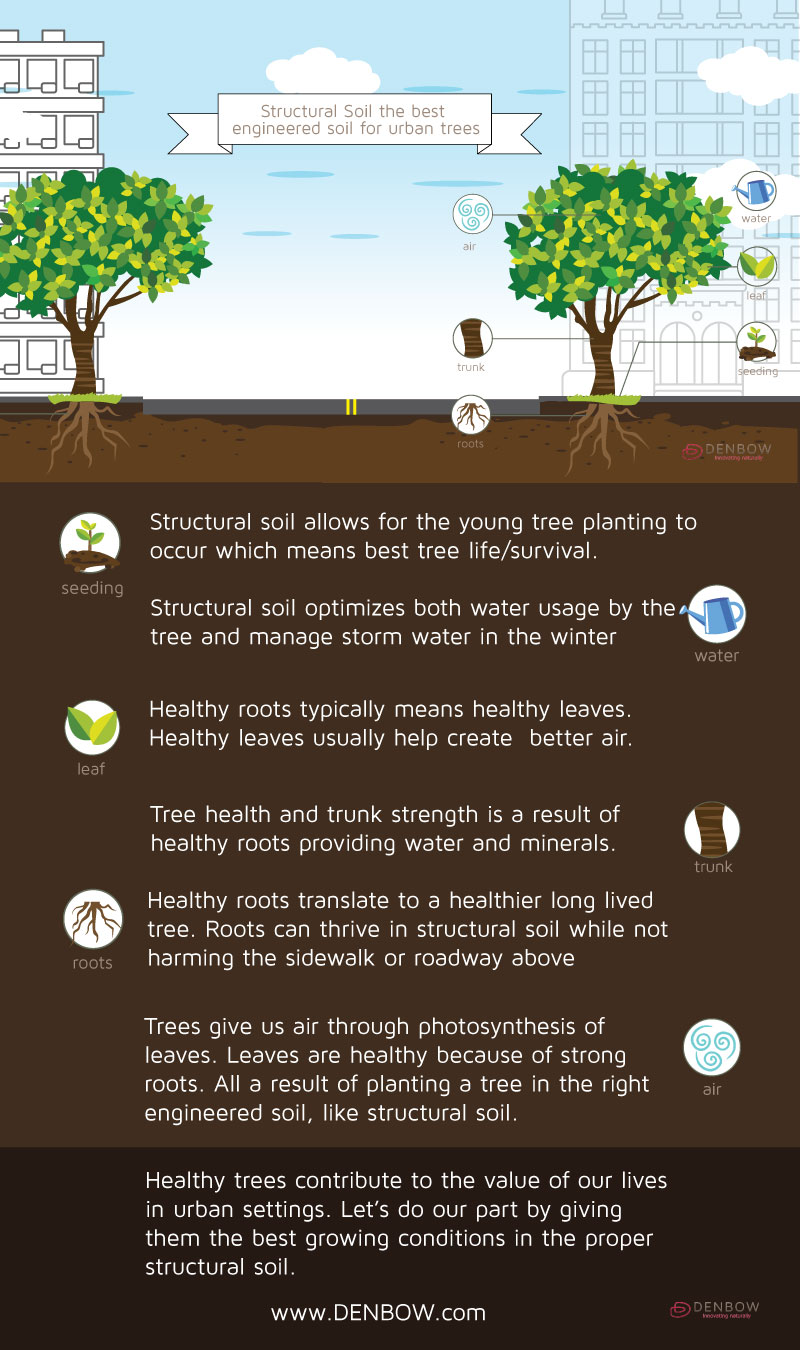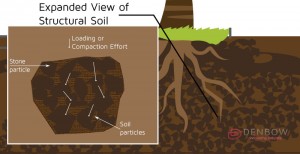Structural Soil – Why is it So Effective? Ask Tom series
/0 Comments/in Construction Landscape Journal, Environment, Soil, Sustainable Development /by Tanya RichardsStructural Soil: an infographic
/0 Comments/in Corporate News, Landscape Journal, Soil, Sustainable Development /by Tanya RichardsStructural Soil: an Infographic

Share This Infographic on Your Site
Save
Save
Save
Structural Soil for Urban Trees
/0 Comments/in Green Infrastructure, Landscape, Soil, Sustainable Development /by Tanya RichardsStructural Soil for Urban Trees
Currently most urban trees are planted directly into existing compacted urban soil or tree pits with limited root space. Trees that are planted in areas surrounded by paving tend to struggle for air space and usually decline well before they should. Where soil volume is limited by pavement, tree roots suffer and tend to take the path of least resistance searching for air, usually in and around pipes, foundations, or to the surface. Healthy trees need a large volume of non-compacted soil with adequate drainage and aeration and reasonable fertility.
While the need and desire for large trees in the urban landscape still is the desired intent, the trees do not survive long enough to fill the need. Not planning for root growth is ignoring the biological requirements of trees and is not economical or environmentally prudent. The failure to provide adequate soil for both drainage and root growth is critical to the life of the tree and without an engineered soil specific to this application, trees have a shortened life span and may die. Ensuring a good supply of air to the tree roots is essential for satisfactory tree growth, however in urban situations, the movement of air into the soil is often restricted. By providing additional root space below the pavement in what otherwise was compacted urban soil, Structural Soil can allow most newly planted trees to have a chance for healthy growth. This mix consists of 80% 75 mm angular clear aggregate and 20% approved sandy clay loam. The aggregates bear the load, providing the structural stability for the pavement above. The angularity of the rock create for the non-compacted soil, providing space for air, water and nutrients the roots, as well as provide for future root expansion. Engineered structural soil provides a resource for root growth beyond the traditional tree pit, allowing for much stronger root growth and ongoing tree health. 
Denbow has been providing structural soil to many municipalities within the Greater Vancouver and Fraser Valley area. These departments use Denbow’s manufactured soil to allow city planners and engineering departments to add trees for the health and beauty of urban communities.
Contact Denbow’s soil experts today to find out more about how structural soil can work in your city or municipality.
Save
Save
Proper Soil Testing Methodology – Ask Tom
/0 Comments/in Construction Landscape Journal, Environment, Soil, Sustainable Development /by Tanya RichardsSave
9 Benefits to Using Compost for Erosion and Sediment Control
/0 Comments/in Environment, Erosion Control, Municipal and Infrastructure Journal, Sediment Control, Slope Stabilization, Stormwater Management, Sustainable Development /by Tanya RichardsEarth Day 2017
/0 Comments/in Community, Leadership, Sustainable Development /by Tanya Richards
“We don’t inherit the earth from our ancestors. We borrow it from our children.”
Chief Seattle
Save
Save
Nature is Green Infrastructure
/0 Comments/in Corporate News, Environment, Sustainable Development /by Tanya RichardsNature is Green Infrastructure
Nature and infrastructure are not independent of each other; on the contrary, nature is infrastructure. From protecting communities from flooding and excessive heat to improving air and water quality, nature is not only a critically important element of infrastructure but also a vital part of human and environmental health. When nature is used as an infrastructural system, it’s referred to as green infrastructure. 
Green infrastructure can be a highlight of regional and metropolitan planning, helping ensure communities have a safe, livable environment with clean air and water that lasts for generations. Although green infrastructure is often associated with green storm water management systems, it can be used to address a wide range of systems at a variety of scales.
Green systems can be used for wildlife, which are increasingly threatened by human encroachment and climate change. For example, corridors or greenways allow animals to move through human communities; these have the added benefit of being a beautiful space that people want to live near.
Park systems, urban forests, and constructed wetlands also serve as green infrastructure. Constructed wetlands help communities manage water locally and provide habitats for wildlife.
Moreover, green infrastructure practices at the site-scale are used by smart communities for transportation systems (such as green streets) and green roofs, weaving nature into the built environment.
Research shows us that green infrastructure works. Compared to grey infrastructure, green systems are more cost-effective and far more beneficial to people and the environment.

Save

